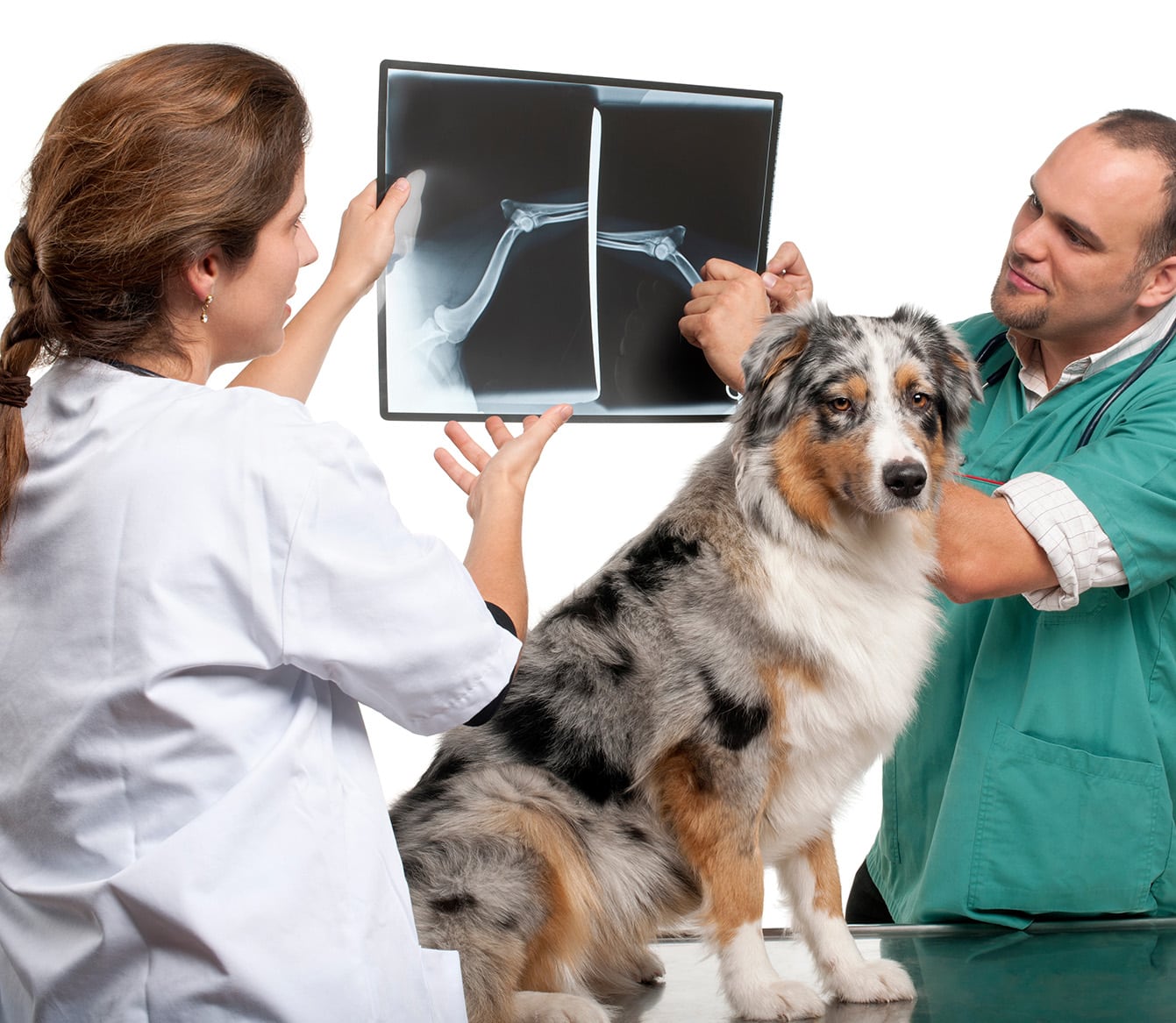Radiology in El Cerrito, California
Imaging Tests (Radiology Options) for Pets:
Imaging in veterinary medicine has advanced greatly since the first radiographs (x-rays) were taken of pets just decades ago. Today a multitude of imaging tests are available to help diagnose and treat diseases in our pets. These tests include radiography (x-rays), ultrasound, CT (or CAT) scans, and MRI scans. Each of these tests has its own advantages and disadvantages and will provide the veterinarian with different information.

Radiography is the most common and readily available imaging test in veterinary practice. It is used to evaluate the size and shape of organs, such as the heart and lungs, as well as to demonstrate broken bones, some foreign objects, fluid accumulations, and many more abnormalities that may aid in diagnosis. It is also the most affordable imaging test and is most often done prior to any of the other imaging options.
Prompt and Professional Urgent Care for Your Pets
Discover the Difference Urgent Pet Can Make
What is Radiography?
A radiograph, commonly called an X-ray, is a black-and-white, two-dimensional image of part of the interior of a body. An image is generated by passing radiation through a particular structure or area, such as the chest or a limb, and the image is then captured. The traditional way of recording the image is on specific X-ray film that senses how much radiation passes through the structure and reaches the film, much like photographic film captures light. The denser a tissue is (such as bone), the whiter the image is on the film. Less dense structures, such as air in the lungs, allow almost all of the X-ray energy to pass through to the film, turning that area black.
When Do We Use Radiology at Urgent Pet Animal Hospital?
In veterinary medicine, diagnostic tools are crucial for correct diagnosis, as pets cannot express how long they have been sick and where the problem is. The two most common clinical signs pet owners tell us are “my pet is less active than normal” and ”they are not eating.” Unfortunately, these signs are consistent with a wide variety of causes. Physical examination alone may not be able to localize the site of the problem, so radiographs are necessary to obtain more information.
At Urgent Pet Animal Hospital, we use radiography (x-ray) to diagnose many animal patients. Urgent Pet uses the latest digital X-ray technology. One of the benefits of this is minimizing the power of the X-ray beam, which is safer for patients. These are some examples of how we use the technology:
- If your veterinarian diagnoses a heart murmur on physical examination, she may recommend chest radiographs to evaluate the size of the heart.
- If the lung sounds are abnormal on physical examination, chest radiographs will diagnose pneumonia, lung cancer, fluid in the lungs, ruptured lungs (pneumothorax), or asthma.
- Your veterinarian will recommend abdominal radiographs for pets with vomiting, diarrhea, not eating, lethargy, or abdominal pain, to name a few. Ideally, most patients with illnesses should get radiographs for a better diagnosis of the condition.
What Are The Risks Associated With Radiography in Veterinary Medicine?
The use of radiation is a cause for concern in both humans and pets, but it is not inherently life-threatening. We believe that the judicious use of X-rays that utilize radiation can be useful and, when it is safe to do so, represents the right decision when judging what is medically necessary. Every precaution will be taken when giving your pet an X-ray to minimize any risk they may be exposed to. The entire staff at Urgent Pet Animal Hospital is dedicated to the health and safety of your furry friend!
Urgent Pet Animal Hospital has the latest low-beam digital X-ray machine that uses precise and fast beams to minimize exposure to staff and patients.
How Are Radiographs Interpreted and Used in Diagnosis?
Radiographs can evaluate bones and the size, shape, and position of many body organs. The size of organs is important because some medical conditions, such as kidney, heart, or liver disease, can alter the size of these organs. The shape and position of organs can be altered or distorted by certain medical conditions, including intestinal blockage or cancer. Tumors, depending on their size and location, can sometimes be detected using radiography. Radiography can be used to diagnose bladder stones, broken bones, chronic arthritis, certain spinal cord diseases, and many other conditions.
At Urgent Pet Animal Hospital, the veterinarian will send the radiographs to a board-certified radiologist for the final review and interpretation. Contact us today to schedule an appointment!
